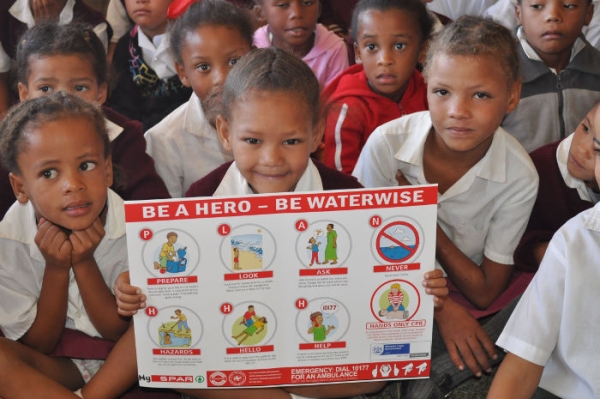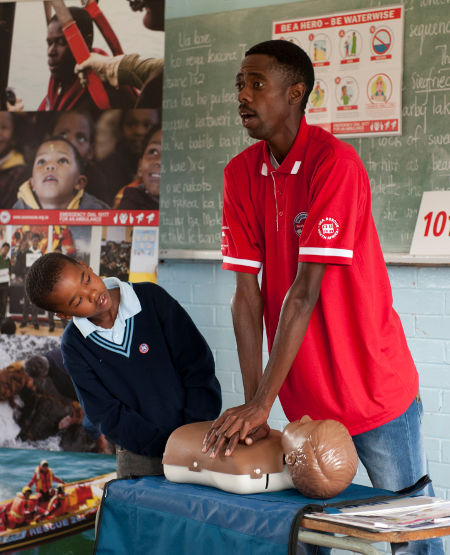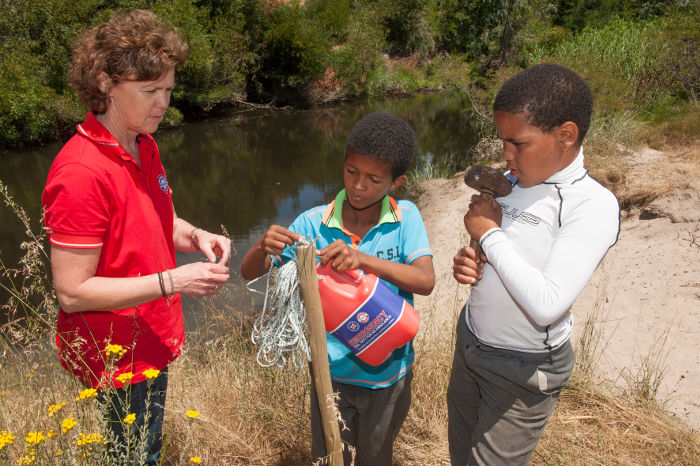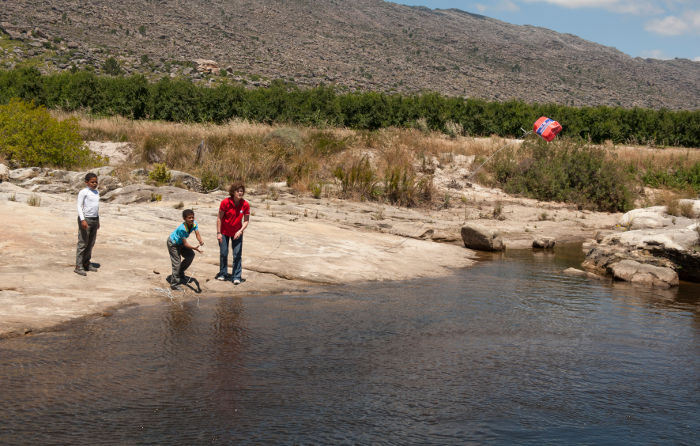NSRI’s water safety education a “drop in the ocean”

The WaterWise Academy has taught water safety skills to over half a million children around the country. These skills are easy to learn and provide an effective way to reduce the number of drownings in South Africa, says the National Sea Rescue Institute (NSRI).
Over 1500 people drowned in South Africa in 2013 and at least twelve children have drowned during these 2014/15 holidays.
The large number of children drowning in South Africa due to “a lack of very basic knowledge” is what motivated the NSRI to start the WaterWise Academy in 2006, says Andrew Ingram, the head of communications and public education at the NSRI.
Ingram describes the story behind many of the drownings that occur, “What happens continually is that a group of children, let’s say three, will go down to the beach, unsupervised, and an adult has told the oldest child in the group that he is in charge of that group. They go down, it’s a nice hot day, they get into the water, the youngest one gets into difficulty. The older child has been told that he is in charge so he feels responsible, he goes in to help and both of them drown. The third one then runs away. And that just repeats itself again, and again, and again. It’s so avoidable with very basic education, and that’s where we’re trying to start, so the children understand what they should and shouldn’t do.”
Primarily targeting disadvantaged school children, WaterWise proactively teaches children about basic water safety skills such as how to avoid an emergency situation, what to do in an emergency, who to call in an emergency, how to perform peer rescue, and how to do Bystander CPR. Bystander CPR is taught using a manikin and involves performing compressions using your hands, but does not require mouth-to-mouth breathing like conventional CPR. Explaining the importance of CPR, Ingram says “the chance of reviving a child who has been in difficulty in cold water, if you know how to do CPR, is very good.”

Kenneth Gagela, the WaterWise Academy Instructor in Soweto, gives Usindiso Primary School grade fives and sixes a lesson in water safety. Photo by Andrew Ingram.
WaterWise’s twelve instructors and nine volunteers teach school children all around the country, spending a 45-minute period educating children in basic water safety. Schools are revisited on a yearly basis to provide a refresher on what the children have learnt.
Starting in November last year, WaterWise began teaching school children how to build buoys out of a three-litre milk bottle, rope, and a pole - all of which are provided by the NSRI. After an instructor has taught peer rescue to the children, he or she will go with two children to a popular swimming spot and supervise them as they build the rescue buoy and connect it to the pole with the rope. Around 20 of these buoys have been set up so far and when schools go back the NSRI plans to investigate how helpful the buoys have been during these holidays.
In the future, these rescue buoys could help prevent children from drowning and avoid children being pulled into the water while rescuing another child. Instead of offering their hand to a child in distress, children are taught to look around for a rescue buoy which can be thrown out to the struggling child who can then be pulled in. If there is no buoy around, children are instructed to look for a stick, or use a shirt or jacket to pull the child out of danger.

Eoudia Erasmus puts up a rescue buoy with with Enrico Makamela, 11, and Ryan Johannes, 12, of Achtertuin Primary School near Ceres. Photo by Andrew Ingram.

Enrico Makamela throws a rescue buoy. Photo by Andrew Ingram.
From its beginnings in 2006 up until the end of last year, WaterWise has trained over 620 000 children. Ingram considers this “a drop in the ocean” and looks to the Department of Basic Education as the way for water safety skills to become common knowledge around the country. Over the last three years, the NSRI has been unsuccessful in its attempt to get the Department to include water safety and CPR in the national Life Orientation curriculum. Ingram finds it shocking that “at school, by the time you finish matric, you know about geography, history, and mathematics but you can’t do CPR.”
“Every single child should know the lesson that we teach on water safety and how to do CPR. And that’s achievable, but the Education Department has to come on board.”
The Department of Basic Education was approached for comment but had not responded by the time of publication.
Ingram urges the Department to bolster its support for water safety education. “Sea Rescue will give the Education Department all of the literature that we have, the teaching methods, the videos - we have it all and they can have it for free. Just teach people to be safe around water. Please!”
Support independent journalism
Donate using Payfast

Don't miss out on the latest news
We respect your privacy, and promise we won't spam you.
Next: Sexual trauma, a talking cat and a mid-life crisis
Previous: City’s janitorial programme to be scrapped in some areas

This article is licensed under a Creative Commons Attribution-NoDerivatives 4.0 International License.
